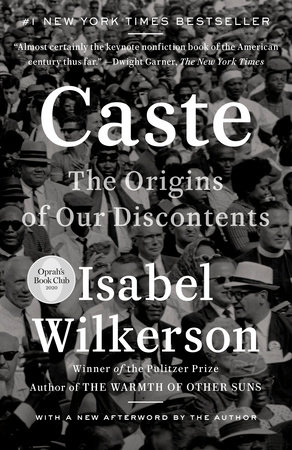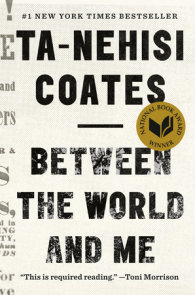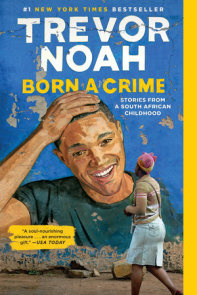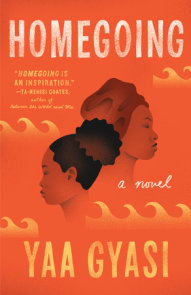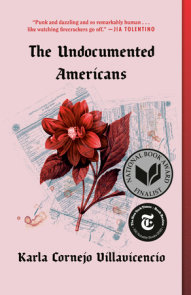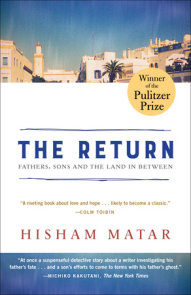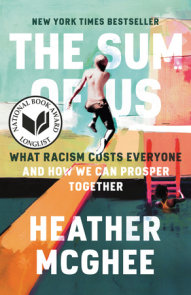READERS GUIDE
Questions and Topics for Discussion
1. At the beginning of Caste, author Isabel Wilkerson compares American racial hierarchy to a dormant Siberian virus. What are the strengths of this metaphor? How does this comparison help combat the pervasive myth that racism has been eradicated in America?
2. Wilkerson begins the book with an image of one lone dissenter amidst a crowd of Germans giving the Nazi salute. What would it mean—and what would it take—to be this man today?
3. What are some of the elements required for a caste system to succeed?
4. Wilkerson uses many different metaphors to explain and help us visualize the concept of the American caste system: the bones inside a body, the beams inside a house, even the computer program in the 1999 film The Matrix. Which of these metaphors helped the concept click for you?Why was it successful?
5. Caste and race are not the same thing. What is the difference between the two? How do casteism and racism support each other?
6. Discuss how class is also different from caste.
7. Who does a caste system benefit? Who does it harm?
8. “Before there was a United States of America,” Wilkerson writes, “there was a caste system, born in colonial Virginia.” How can Americans reckon with this fact? What does it mean to you to live in a country whose system of discrimination was cemented before the country itself?
9. Did learning about the lens and language of caste change the way you look at U.S. history and society? How?
10. Wilkerson discusses three major caste systems throughout the book: India, Nazi Germany, and America. What are some of the differences that stood out to you among these three systems? What are the similarities? How did learning about one help you understand the others? For instance, did the fact that the Nazis actually studied America’s segregation practices and Jim Crow laws help underscore the breadth of our own system?
11. Harold Hale, an African-American man, helped his daughter defy the “rules” of their caste in 1970s Texas by naming her Miss. As Wilkerson illustrates throughout the book, the dangers of being seen as defying one’s caste can range from humiliation to death. What do you think of the lengths Mr. Hale felt he needed to go to assure dignity for his daughter? What are the risks he took by doing so? Should Miss have had a say in her father’s quietly revolutionary act? Explain your thinking.
12. Discuss the differences and similarities between how Miss was treated in the South, where racism and casteism have historically been more overt, and in the North, where they still exist, but can be more subtle. Do you think these various forms of racism and casteism must be fought in different ways?
13. Wilkerson quotes the orator Frederick Douglass, who described the gestures that could incite white rage and violence: “in the tone of an answer; in answering at all; in not answering . . .” These contradict each other: One could incite rage by answering and by not answering. Discuss the bind that this contradiction put (and still puts) African-American people in.
14. Wilkerson frequently uses her own experience as an African-American woman to illustrate her points regarding caste—including the experience involving the confusion when someone “rises above” his or her presumed station. What do readers gain from hearing about Wilkerson’s personal experiences in addition to her deep historical research?
15. “Indians will ask one’s surname, the occupation of one’s father, the village one is from, the section of the village that one is from, to suss out the caste of whoever is standing in front of them,” Wilkerson writes. “They will not rest until they have uncovered the person’s rank in the social order.” How is this similar to and different from the process of determining caste in America? Have you ever, for instance, asked someone what they did for work or where they lived or went to school, and been surprised? Did you treat them differently upon hearing their answer?
16. Analyze the process of dehumanization and how it can lead to people justifying great acts of cruelty.
17. “Evil asks little of the dominant caste other than to sit back and do nothing,” Wilkerson writes. Whether in the dominant caste or not, what are some of the ways that each of us, personally, can stand up to the caste system?
18. Wilkerson gives examples that range from the horrifying (lynching) to the absurd (the Indian woman who walked across an office to ask a Dalit to pour her water from the jug next to her desk) to illustrate caste’s influence on behavior. How do both of these types of examples—and everything in between—help cement her points? Why do we need to see this range to clearly understand caste?
19. Discuss how overt racism subtly transforms into unconscious bias. What are the ways that we can work to compensate for the unconscious biases inherent in a caste system?
20. Wilkerson writes about the “construction of whiteness,” describing the way immigrants went from being Czech or Hungarian or Polish to “white”—a political designation that only has meaning when set against something “not white.” Irish and Italian people weren’t “white” until they came to America. What does this “construction of whiteness” tell us about the validity of racial designations and the structure of caste?
21. It is a widely held convention that working-class white Americans may often “act against their own interests” by opposing policies designed to help the working class. Discuss how the logic of caste disproves this concept and redefines that same choice from the perspective of maintaining group dominance.
22. How does the caste system take people who would otherwise be allies and turn them against one other?
23. Wilkerson describes dinner with a white acquaintance who was incensed over the treatment they received from the waitstaff. Why did the acquaintance respond the way that she did, and how did it hurt or help the situation?
24. What do we learn from Albert Einstein’s response to the American caste system upon arrival from Germany?
25. What are some of the steps that society, and each of us, can take toward dismantling the caste system?







